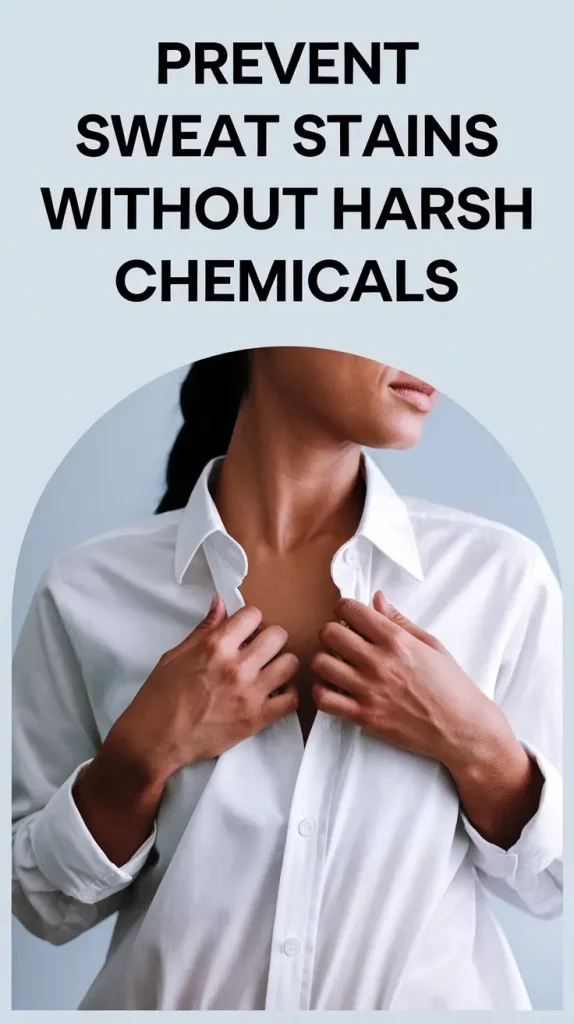Prevent Sweat Stains Without Harsh Chemicals: Best Natural Tips and Products for 2025
Did you know that at least once a week, 70% of Americans report having noticeable underarm sweat stains? It’s not just a cosmetic issues – these stains can ruin your favorite clothes and diminish your self-esteem, too. As the heat increases from global warming in the United States, managing sweat stains is not an option heading forward. The irony is that most popular antiperspirants contain skin irritants, endocrine disruptors and faux fragrances like Aluminum Chloride, Parabens, and Artificial Fragrances.
You have come to the right place, if you want to stay dry without further compromising your health or mother earth. In this guide, you will find out how to stop sweat stains without the use of harsh chemicals. We will cover natural deodorants, which fabrics to choose, improved hygiene practices, as well as effective lifestyle changes. Additionally, tailor-made comparison charts along with expert tips recommended for 2025 will be provided.
Who is this intended for? This article is aimed for people living in warm and humid states, work outdoors, have sensitive skin, or want to cut down on chemical consumption.
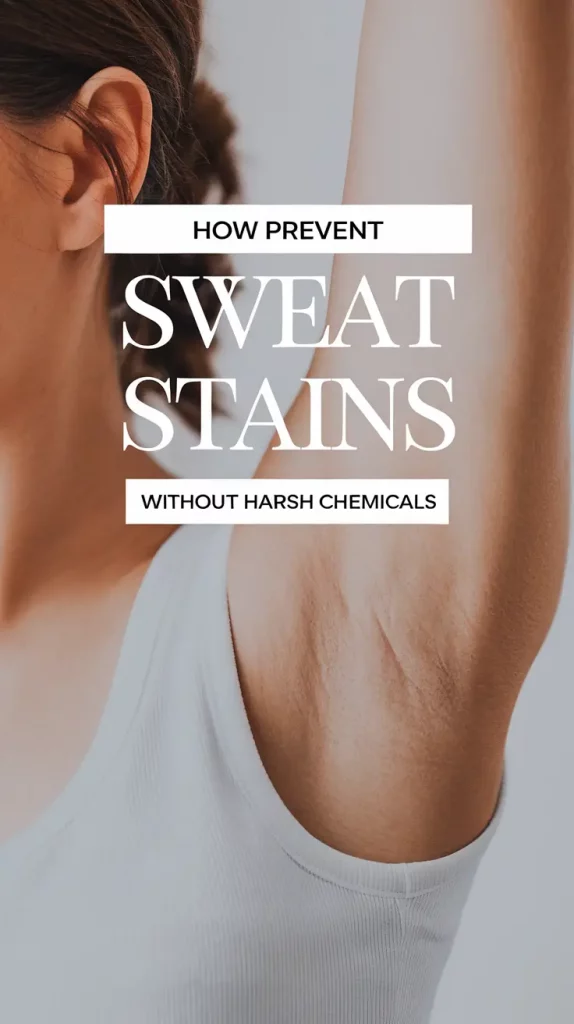
Understanding the Reason Behind Sweat Stains
Theories of Causes of Sweat and Stains
Sweating is a cure that your body adopts to cool down. But why does sweating cause those yellow or white stains on your clothes? The reason for this include chemical reactions of your sweat with aluminum salts present in antiperspirants and even the colors used on the fabrics of your clothing.
Stains are most common in the underarms where sweat collects. These stains are really a reaction with the substances mentioned.Fabrics made of polyester and even nylon are not good at moisture due to their ability to retain moisture.logger than before.
Habits That Exacerbate The Situation
-
- Wearing Tight Dark and White Clothes
- Applying antiperspirants in the morning not the night before
- Not Applying Deodorant During The Colder Days Of The Month
- Cleaning Clothes Which Have Stubborn Detergent Residue
Quick Fact: Aluminum-based antiperspirants can create insoluble salt residues that cling to fabric and cause yellowing.
Safer Alternatives to Chemical Antiperspirants
Natural Deodorants Gaining Popularity
The United States saw a major growth in natural deodorant sales during 2025. You can buy deodorants that contain no aluminum or baking soda plus use only essential oils for fragrance. Leading brands Native Humble and Each & Every provide natural deodorants. These products protect against odors while keeping your pores open.
DIY Deodorant Recipes
If you’re into homemade remedies, here’s a simple recipe:
Ingredients:
- 2 tbsp coconut oil
- 2 tbsp arrowroot powder
- 1 tbsp baking soda (optional for sensitive skin)
- 5 drops tea tree or lavender oil
Instructions:
- Mix all ingredients in a bowl.
- Store in a small container.
- Apply a pea-sized amount daily.
Crystal Deodorants: Fact or Hype?
People continue to use potassium alum crystals as their preferred deodorant option. These products reduce skin bacteria but do not stop sweating completely. Good news? No aluminum chlorohydrate. Bad news? These products do not work as well when you are under stress or exercising.
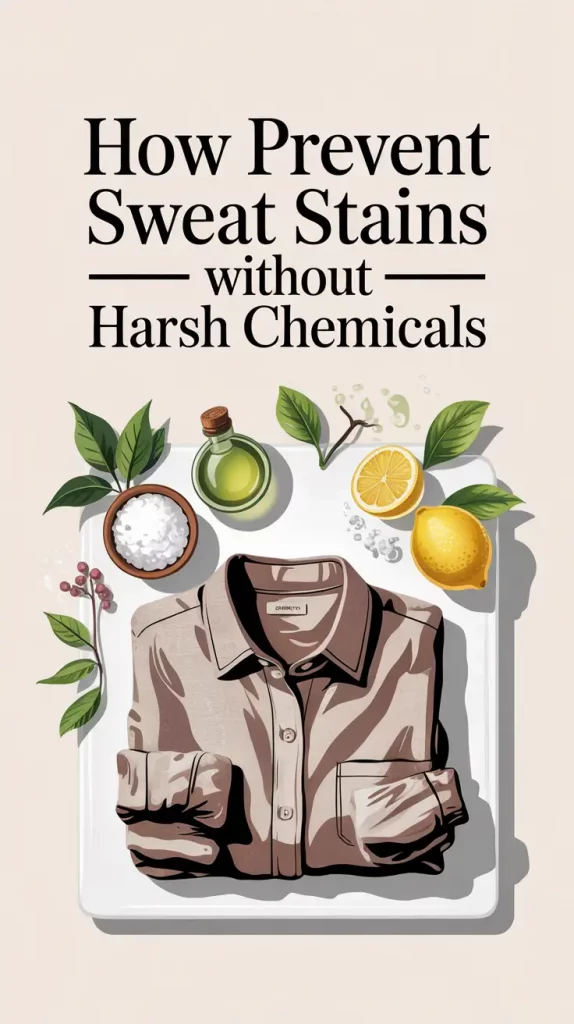
| Product Type | Active Ingredient | Odor Control | Stain Prevention | Skin Sensitivity |
|---|---|---|---|---|
| Native Deodorant | Magnesium Hydroxide | ★★★★ | ★★★★ | Excellent |
| DIY Natural Formula | Baking Soda/Coconut | ★★★☆ | ★★☆ | Moderate |
| Crystal Deodorant | Potassium Alum | ★★★ | ★★★ | Very Good |
What You Wear Matters
Fabrics That Fight Sweat Naturally
If you want to stay cool and prevent stains, what you wear matters as much as what you apply.
Recommended fabrics:
- Organic cotton: Breathable and highly absorbent
- Bamboo: Naturally antibacterial and moisture-wicking
- Merino wool: Great for regulating body temperature
- Linen: Lightweight and dries fast
Avoid synthetic materials like polyester, rayon, and spandex blends, which trap sweat and amplify odors.
Color Strategy
Surprisingly, the color of your clothes plays a role in how visible sweat stains appear.
- Light gray, light blue, and pastels are more forgiving.
- White can yellow easily.
- Black hides sweat well but traps heat.
Have you ever changed your shirt twice in one day just to avoid visible sweat patches? If yes, it might be time to rethink your fabric choices.
Personal Habits That Make a Difference
Best Time to Apply Deodorant
Believe it or not, nighttime is better. Applying deodorant after a shower at night allows it to work while your sweat glands are less active. This enhances absorption and effectiveness.
Rethink Your Shower Routine
- Use a mild cleanser instead of antibacterial soap
- Gently exfoliate underarms twice a week to remove residue
- Pat dry instead of rubbing with a towel to reduce friction
Natural pH Balancers
Balancing the pH of your underarm skin can reduce bacterial growth. Try:
- Apple cider vinegar (diluted)
- Witch hazel
- Aloe vera gel
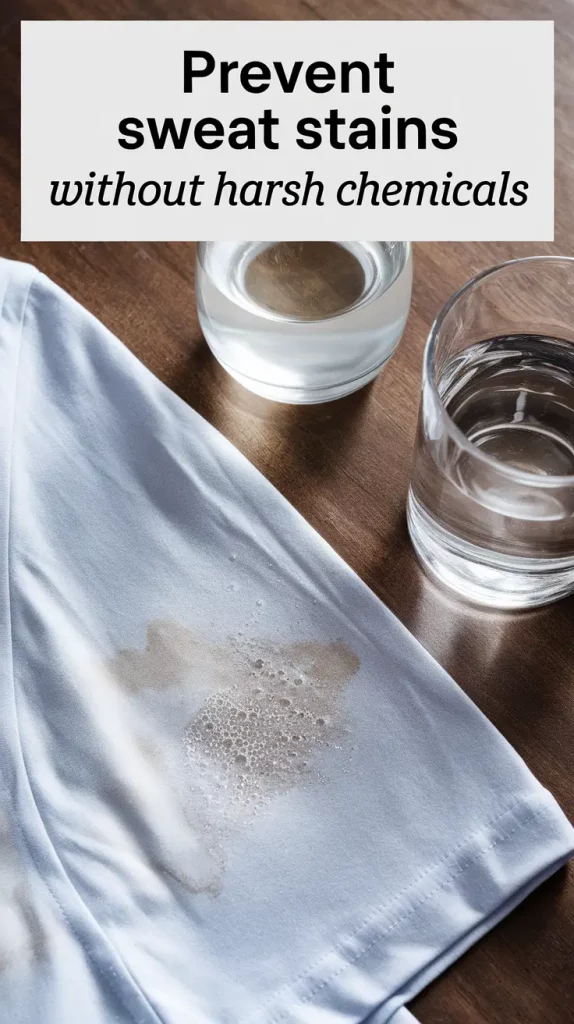
How to Rescue Already-Stained Clothes
Natural Cleaning Methods
Got yellow marks on a favorite tee? These natural methods work:
1. Lemon Juice + Baking Soda Paste
Apply and leave for 30 minutes before washing.
2. Hydrogen Peroxide Mix
Mix one part peroxide, one part baking soda, and one part water. Scrub and rinse.
3. White Vinegar Soak
Soak clothing in 1 part vinegar to 4 parts cold water for 30 minutes.
Tip: Always air dry clothes after treating stains. Heat from the dryer can lock them in.
Eco-Friendly Detergents to Try
- Seventh Generation
- ECOS
- Tru Earth Laundry Strips
These brands are biodegradable and free from harsh chemicals that react with sweat.
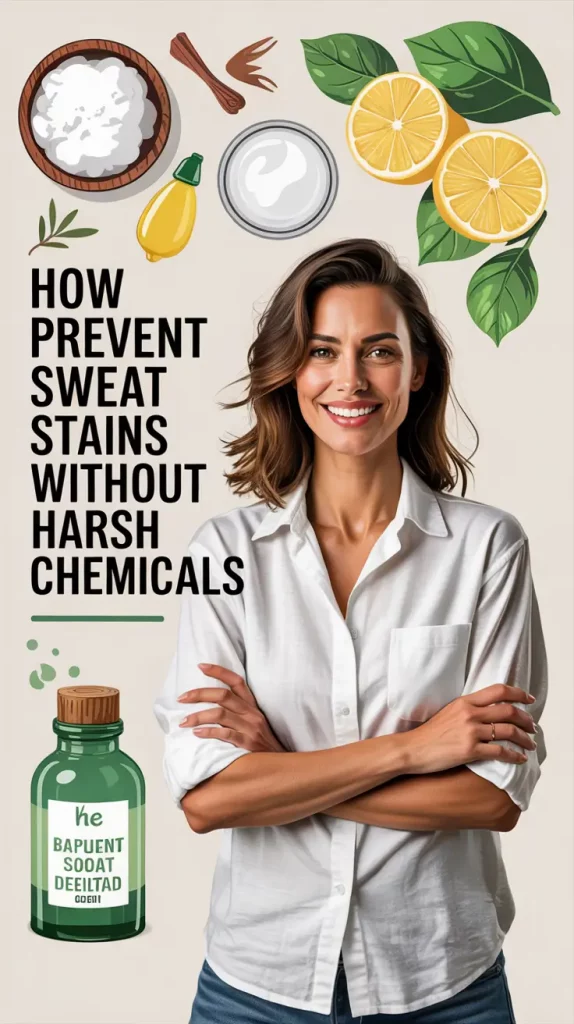
2025 Trends in Sweat Management
Sustainable Deodorants
Consumers are now opting for zero-waste deodorants in recyclable or compostable packaging. Look for:
- Paper-based tubes
- Refillable containers
- Water-free deodorant creams
Wearable Tech
Some fitness clothing brands now integrate sweat-monitoring sensors into athletic wear to track hydration and temperature changes.
TikTok Tips: Useful or Useless?
Social media continues to promote hacks like rubbing lemon under your arms or using micellar water. While some work short-term, few are dermatologist-approved.
Would you trust a skincare hack you found on TikTok? Or do you rely on expert advice?
Final Thoughts: Make the Switch to a Healthier Routine
Let’s recap what we covered:
- Sweat stains result from chemical reactions, not just perspiration.
- You don’t need harsh antiperspirants to stay dry.
- Natural deodorants and smart fabric choices go a long way.
- Your daily habits can make or break your results.
- Rescue old clothes with safe, effective stain removal tricks.
What do you think? Have you tried switching to a natural routine yet? Share your experiences in the comments below and let’s build a sweat-stain-free future together.
➡️ Share this article with friends who could use a cleaner, healthier way to stay fresh!
